Review Article - (2023)Volume 12, Issue 2
An Overview of Facts Devices with Optimisation Techniques
M. Chethan and Ravi. K*Abstract
FACTS devices control power flow and change bus voltages in electrical power systems, leading to lower system losses and excellent system stability. The article discusses the research from the last decade that evaluated various methods for placing FACTS devices using the meta-heuristic approach to address the positioning of FACTS devices to maintain proper bus voltages and control line flow, and improve the overall system efficiency. Several models and techniques suggest that devices allocate in a particular location with different parameter settings. Finally, the optimization problem improved system performance by decreasing power loss, improving the voltage profile and power angle at each bus, raising the L-index, and minimizing generating costs. FACTS devices can increase the transmission line's capacity for transferring power by increasing the voltage at its terminals at both ends and reducing line reactance.
Keywords
Bus voltages; Line reactance; L-index; Optimisation techniques
Introduction
The motivation for the review
Reducing power losses and increasing the voltage profile in electrical power transmission lines are essential for our country [1-3].
When the power losses are high in standard levels of developing countries, the stability and reliability of the systems correlate with system losses in deregulated markets.
Although this is a problem, several reduction approaches are still employed globally.
The objective of the review
This work aims to discuss in detail the solutions different researchers took to minimize losses. The continued development of the researchers, the experimental challenges they faced, the outcomes they were able to obtain, and the potential severe measures they implemented to minimize power loss. Learn about the future study field that researchers are developing [4-6].
Literature Review
In a power system network, the load have been increasing daily; using the facts, devices in a network are very close to thermal capabilities and improve system capacity and Transmission line efficiency. All of the variables that influence power losses in transmission systems, such as node voltages, voltage magnitudes, phase angles, and line-reactance, can be controlled by precisely FACTS devices. This section briefly presents the fundamentals of PSO and E.P. algorithms and the methods for relating FACTS device variables to PSO and E.P. parameters. A modern technique includes ANN Methods, S.A. methods, G.A., E.P., A.C.O, and P.S.O and A.I.S. These methods effectively solve optimisation issues when global rather than local solutions are preferred. We have successfully employed these methods to handle an optimisation problem [7,8].
Many researchers have presented sensitivity-based methods in the literature, including those based on jacobian analysis, eigenvalue analysis, nodal analysis techniques, and index methods. The numerous sensitivity based approaches literature include the Jacobian matrix based sensitivity-method, eigenvalue analysis-based methods, optimisation techniques, index methods, residue based methods, and a few other approaches like pole placement techniques, frequency response techniques, root-locus techniques, projective control method, nonlinear feed control method, lambda-iteration method, and eigen-sensitivity theory of augmented matrix.
Many optimization based methods have been proposed in the literature, including dynamic optimization programming algorithms network contingency, mixedinteger optimization programming techniques, hybrid-optimization programming algorithms, and non-linear optimization programming techniques. Other techniques include linear optimisation programming techniques, immune based optimisation algorithms, and mixed integer linear programming [9].
Genetic-Algorithms (GA) Fuzzy-G.A, are among the various AIbased methods proposed in the literature. Tabu search- Algorithms evolutionary, population-based evolutionary algorithm, approach based on Simulated Annealing (SA), techniques for Particle Swarm Optimization (PSO), Hybrid- P.S.O, enhanced leader P.S.O, Ant Colony Optimization (ACO) algorithms, fuzzy logic-based approach, hybrid T.S.S.A, Artificial Neural Network (ANN) based algorithms, Bacterial Swarming Algorithm (BSA), harmony search algorithm, and bees algorithm A.B.C algorithm. Hybrid chemical reaction optimisation algorithm, binary bat optimisation, grey wolf optimizer, crow search algorithm, hybrid cat firefly algorithm, cat swarm optimisation, firefly algorithm, atom search optimization, dragon fly algorithm, gravitational search algorithm, cummilative gravitational search algorithm whale optimization algorithm, meta heuristic harmony search algorithm, lightning search algorithm, fractional levy light bat algorithm, hybrid cuckoo search algorithm adaptive cuckoo search algorithm, modified differential evolution. Refined power flow algorithm, multi objective multi verse optimizer algorithm, brainstorm optimization, improved differential harmony search algorithm, PSO adaptive G.S.A algorithm, self-adaptive differential volutionary algorithm, quasi oppositional chemical reaction optimisation, min cut algorithm, parallel seeker optimisation algorithm, hybrid chemical reaction optimization algorithm, M.D.E algorithm, adaptive grahooper optimisation [10].
Discussion
Study of F.A.C.T.S devices
Power electronic converters based facts devices can be used in the transmission line, improving the transmission network's overall efficiency (Table 1). A group of Facts devices which their application, installation cost mva, and system dynamic response (Figures 1-4).
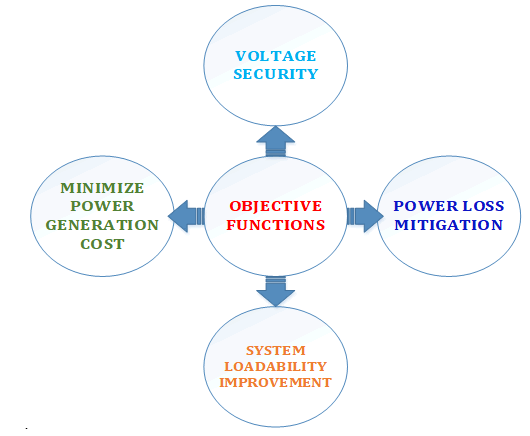
Figure 1: Objective functions of facts devices.
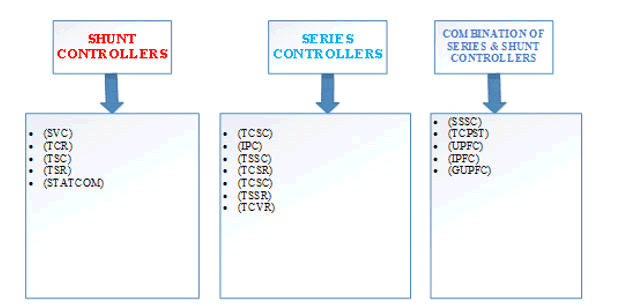
Figure 2: Assessment of facts devices and their works.
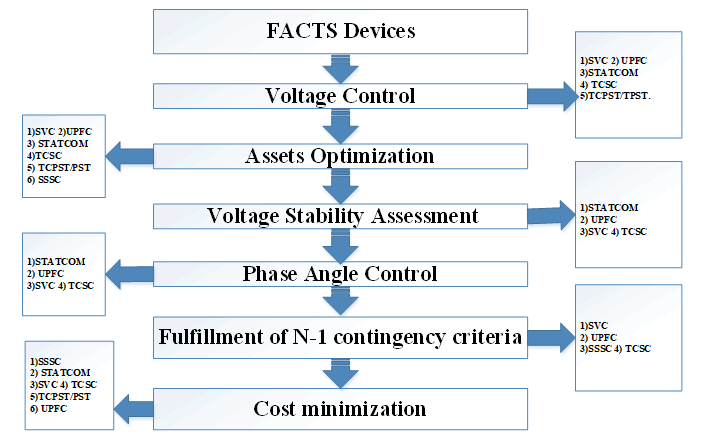
Figure 3: Assessment of facts devices and their works.
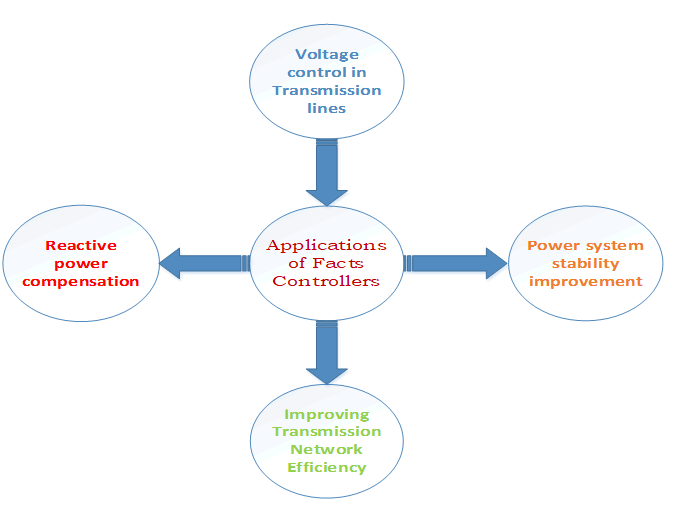
Figure 4: Facts controllers Applications in power systems.
| Challenges | Identification problem | Corrective measures | Traditional approaches | Adding FACTS devices in the circuit |
|---|---|---|---|---|
| Limiting voltages | At low voltages level at high load | Reactive power supply | Using series capacitors, shunt capacitors and svc | Using S.T.A.T.C.O.M., T.C.S.C. |
| At high voltages level at light load | The reactive power supply removed | Using shunt capacitors | Using T.C.S.C., T.C.P.A.R. | |
| Reactive power absorbed | Svc, shunt capacitor and shunt reactor | Using S.T.A.T.C.O.M., TCR | ||
| Following outages in high voltage | Reactive power absorb | Additional reactor used | TCR | |
| Protecting equipment | Need additional arrestor. | T.C.V.L. | ||
| Following outages in low voltage | Limiting the overload and supply of reactive power | Switching shunt capacitor, shunt reactor, using svc and switching series capacitor | T.C.S.C., S.T.A.T.C.O.M. | |
| Overload prevention | Adding series reactor, Tcpar | TCSC,IPFC,UPFC | ||
| Physical limits | Overload transformer/line | Overload reduction | Adding transformers/line | U.P.F.C., T.C.P.A.R. |
| Addition of a series reactor | I.P.C., TCR | |||
| Trip of parallel circuit | Minimise circuit loadability | Addition of series capacitor, reactor | TCR, U.P.F.C. | |
| Power flow loops | Line load sharing in parallel | Series reactance adjustment | Adding additional series rector/capacitor | TCSC,UPFC,IPC |
| Phase angle adjustment | Adding par | T.C.P.A.R. | ||
| Sharing post-fault condition | Rearranging networks | Using series reactor | TCSC,IPC,TCR,TCPAR | |
| Reversal of power flow direction | Phase angle adjustment | Using par | UPFC,IPC,TCPAR | |
| Level of short circuits | Limit circuit breaker current | Reducing short circuit current | Addition of using a fuse, the reactor | UPFC,SCCL,IPC,TCR |
| They remove the circuit breaker when the fault occurs. | Add up on circuit breaker | |||
| Rearranging of network | Splitting of bus | I.P.C. |
Table 1: Steady-state issues in power system operation.
Optimisation techniques
Artificial intelligence based techniques, sensitivity based, and optimization based, are used to determine the best location of facts devices in the transmission system (Figure 5) [11].
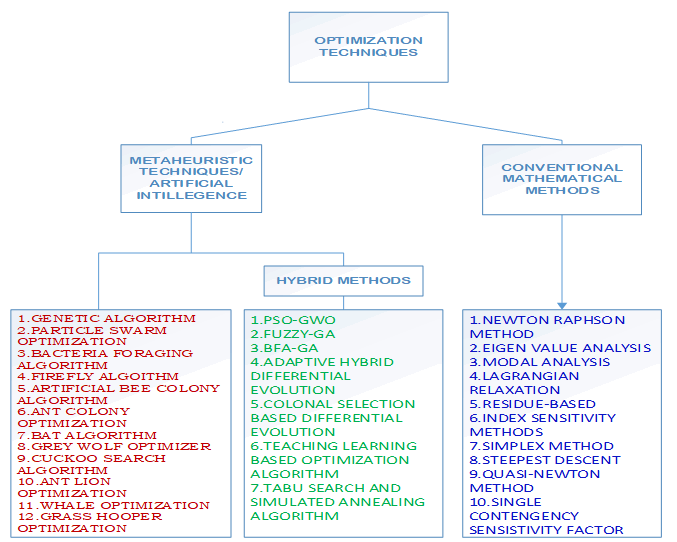
Figure 5: Optimisation techniques.
Sensitivity based methods
Optimal Power Flow (OPF) determines the best possible location for F.A.C.T.S components like T.C.S.C. in Ref. Sensitivity-based methods have addressed the optimal site and regulation of shunt F.A.C.T.S devices for controlling renewable energy resources in power systems (Table 2).
| Objective functions | Shunt compensation technique | Series compensation technique |
|---|---|---|
| Power factor improvement | Major | Minor |
| Power losses | Minor | Major |
| Voltage level improvement | Minor | Major |
| Reduction of voltage fluctuations | Till now, no used | Major |
Table 2: Compensation technique for finding objective functions.
Optimisation programming techniques
The best location of F.A.C.T.S devices used to examine the various techniques, including linear and quadratic programming, nonlinear optimisation programming, integer and mixed integer optimisation programming, and dynamic optimization programming (Table 3).
| Technological functions | Implementation facts controllers |
|---|---|
| System stability improvement, | T.C.S.C. |
| Reducing voltage collapse | |
| Controlling reactive power and true power in transmission line | U.P.F.C. |
| Harmonics levels reducing | |
| Voltage controls | S.T.A.T.C.O.M. |
| Compensation for reactive power | |
| Power flow control in sub-networks | I.P.F.C. |
| Voltage profile maintenance | |
| Power quality improvement | S.V.C. |
| Voltage regulation | |
| Power system stability enhancement | S.S.S.C. |
| Damping power oscillations |
Table 3: FACTS devices controller's contribution to transmission lines.
Nonlinear Optimisation Programming (N.L.P.)
In uses a nonlinear optimisation approach to evaluate controlling parameters. Eissa MM, et al. suggests a non-linear interior point O.P.F. method for accessing the devices like G.U.P.F.C [12].
Integer and Mixed Integer optimization Programming (I.P. and M.I.P.) techniques
In a power system transmission network, the integer and mixed integer optimisation programme, the T.C.P.C.S.T, is used to control the actual power loss as well as generation limits and shifting phase angle constraints.
Dynamic Programming (D.P.) Techniques
The Differential Evolution (D.E.) method is employed to solve optimal power flow in power systems using the Unified Power Flow Controller (U.P.F.C.), an efficient and adaptable Flexible A.C. Transmission Systems (FACTS) device, to reduce the generation cost and maintain the power flows within their security limitations [13].
Artificial Intelligence (A.I) Techniques
The best placement of F.A.C.T.S controllers is discussed in this part using a variety of artificial intelligence based methodologies, including a Genetic Algorithm (G.A.). Artificial Neural Network (ANN), Tabu Search Optimisation (TSO), Ant Colony Optimisation (A.C.O.) methodology, Simulated Annealing (S.A.) approach, Particle Swarm Optimisation (PSO) algorithm, and Fuzzy Logic-based approach.
Genetic Algorithm (G.A.)
The ideal placement and U.P.F.C. parameter values are determined using G.A. and PSO to enhance the goal of strengthening power system security under single contingencies. Adopting a hybrid G.A. method for O.P.F. with FACTS devices is recommended. For the best placement of FACTS devices, multi-objective optimal power flow in G.A. G.A. regulates power flow through any transmission line, to enhance system capabilities, the perfect location to place phase shifters and the best quantity to use has addressed using a genetic algorithm. A multi objective evolutionary algorithm selects the Location of FACTS devices for power system security in for enhancing power system load ability. G.A. is to be used to locate upfc in Singh SN, et al. A genetic algorithm determines the best placement of phase shifters in the network to reduce power flows, increase network load ability, and reduce production costs.
Evolution strategies (E.P.)
Evolutionary techniques suggest locating FACTS controllers in power systems in the best possible locations. Optimal allocation of FACTS devices using the evolutionary Algorithm in Reference enhances overall transfer capability. In Reference, Somebody has proposed a hybrid-meta heuristic technique based on evolutionary computing and sequential quadratic programming for the best placement of FACTS Devices like U.P.F.C. in the power system. The ideal location and FACTS device settings are determined in while considering the power loss in transmission lines and voltage deviation buses. A multiobjective evolutionary method is applied.
Tabu search algorithm
The tabu search algorithm is discussed in ref to select the appropriate location for FACTS controllers in power systems. About, the ideal location of facts devices in the transmission network is optimised with the help of a proposed hybrid-meta heuristic technique based on tabu search and nonlinear programming methods.
Simulated annealing algorithm
Reference, Majumdar S, et al. that power loss minimisation with the help of simulated annealing and particle swarm-optimisation techniques. From, Bhasaputra P, et al. the tabu-search, simulated annealing techniques. Suggesting a hybrid-meta heuristic approach based on S.A. and PSO for loss minimization.
Particle Swarm Optimization (P.S.O) algorithms
In ref, Ahmad AA, et al., the control parameters of facts devices with the help of a Particle Swarm Optimisation (P.S.O) from. The P.S.O. technique calculates the installation cost of T.C.S.C and U.P.F.C to find power-system loadability with the help of P.S.O techniques. In, the plan is to allocate F.A.C.T.S based on anticipated security costs using a hybrid PSO. In, the best position for F.A.C.T.S devices is determined using the P.S.O technique, considering installation costs and power system security [14-18].
In, particle swarm optimisation uses U.P.F.C. to find the line outage in the power system network. Suggests optimal locations of multiple S.T.A.T.C.O.M. for improving voltage stability and loadability [19,20].
Fuzzy Logic (F.L. algorithms)
Due to the increasing load on the existing power transmission lines, voltage stability and voltage collapse have become crucial challenges in the design and operation of power systems. Literature addresses these issues. Researchers have discussed a fuzzy logic-based strategy for the best positioning and scaling of FACTS controllers in power systems.
Harmony Search (H.S. algorithm)
The H.S. algorithm determines the ideal location for FACTS devices, including U.P.F.C., T.C.S.C., and S.V.C. Another method for locating multi-type FACTS devices is using the H.S. algorithm incorporating S.V.C., T.C.P.A.R.s, and U.P.F.C.
Key points and observations
Key points
• Many authors contributed their works as the facts devices placed in the bu systems to improve voltage profiles and reduce power loss with the help of bio-inspired algorithms.
• Some papers classified losses as real and reactive power losses. Active power generates heat, light, torque, and other effects.
• Reactive power losses occur because of measuring power factors from inductive load due to causing magnetic flux, failure of motor coils, and heating types of equipment.
• Many authors are looking at the reason for power losses of the existing system, lines, unbalanced phases, poor equipment quality, inadequate conductor size, low power factor, and improper arrangement of protection devices.
Observations
• Particle swarm optimisation is a technique for solving problems discussed in many articles.
• Some authors proposed an optimisation technique like harmony search algorithms based on the performance of musical instruments, which are highly compatible with inserting a few parameters.
• Grey wolf algorithm, the cuckoo search algorithm, and the brainstorm optimisation to place facts devices, reducing the instalment cost and system loadability.
• Generally, some authors have composed a paper with a genetic algorithm, and the newton Rapson method is a primary method to compare voltage stability by incorporating facts devices.
• Some authors have shown that high power losses contribute to increased energy loss in distribution networks. Utilities must minimise power loss in the system to reduce resultant energy loss.
• Many authors raise the issues of other factors that contribute to increased power loss in Transmission systems are as reducing resistance, power factor improvement, reduction of skin effect use, and wrong sizing of conductors.
• Others have only considered absolute power loss minimisation. They are not working with reactive power loss.
• Some authors work only on improving voltage profile and power system stability, not reducing power loss. They are not considering.
• Some authors proposed the location of facts device to decrease cost and system loadaibility withstand limits.
Conclusion
This research provides a bibliographical survey of published work on the proper positioning and sizing of FACTS devices in power systems. To investigate the subject, researchers used a variety of heuristic optimisation techniques. As essential guidelines for adequately positioning and sizing FACTS devices, the publication includes a thorough literature analysis and a list of published sources.
References
- Liu Y, Farnsworth M, Tiwari A. A review of optimisation techniques used in the composite recycling area: State-of-the-art and steps towards a research agenda. J Clean Prod. 2017;140:1775-1781.
- Kim YH, Rana S, Wise S. Exploring multiple viewshed analysis using terrain features and optimisation techniques. Comput Geosci. 2004;30(10):1019-1032.
- Ahmad AA, Sirjani R. Optimal placement and sizing of multi-type FACTS devices in power systems using metaheuristic optimisation techniques: An updated review. Ain Shams Eng J. 2020;11(3):611-628.
- Wang C, Nehrir MH. Analytical approaches for optimal placement of distributed generation sources in power systems. IEEE trans power Syst. 2004;19(4):2068-2076.
- Kansal S, Kumar V, Tyagi B. Optimal placement of different type of DG sources in distribution networks. Int J Electr Power Energy Syst. 2013;53:752-760.
- Gou B. Optimal placement of PMUs by integer linear programming. IEEE Trans Power Syst. 2008;23(3):1525-1526.
- Freudiger J, Shokri R, Hubaux JP. On the optimal placement of mix zones. Int Symp Privac Enhan Tech Symp. 2009;216-234.
- Cohen R, Lewin-Eytan L, Naor JS, Raz D. Near optimal placement of virtual network functions. In 2015 IEEE Conference on Computer Communications (INFOCOM) 2015;26:1346-1354.
- Packiasudha M, Suja SJ. Jerome A new Cumulative Gravitational Search algorithm for optimal placement of FACT device to minimise system loss in the deregulated electrical power environment. Int J Electr Power Energy Syst. 2017;84:34-46.
[Crossref] [Google Scholar] [PubMed]
- Balamurugan K, Muralisachithanandam R, Dharmalingam V. Performance comparison of evolutionary programming and differential evolution approaches for social welfare maximization by placement of multi type FACTS devices in pool electricity market. Int J Electr Power Energy Syst. 2015;67:517-28.
- Ebeed M, Kamel S, Nasrat LS. Optimal siting and sizing of SSSC using improved harmony search algorithm considering non-smooth cost functions. IEEE Explore. 2017;1286-1291.
- Zamani MK, Musirin I, Suliman SI, Bouktir T. Chaos embedded symbiotic organisms search technique for optimal FACTS device allocation for voltage profile and security improvement. Indones J Electr Eng. 2017;8(1):146-153.
- Nusair KN, Alomoush MI. Optimal reactive power dispatch using teaching learning based optimization algorithm with consideration of FACTS device “STATCOM”. IEEE Explorer. 2017;1-12.
- Jordehi AR. Optimal allocation of FACTS devices for static security enhancement in power systems via Imperialistic Competitive Algorithm (ICA). Applied soft computing. 2016;48:317-328.
- Kumar BV, Srikanth NV. Optimal location and sizing of Unified Power Flow Controller (UPFC) to improve dynamic stability: A hybrid technique. Int J Electr Power Energy Syst. 2015;64:429-438.
- Jyothsna TR, Vaisakh K. Design and performance evaluation of SSSC supplementary modulation controller in power systems using SPEF method. Int J Electr Power Energy Syst. 2012;35(1):158-170.
- Jordehi AR. Brainstorm Optimisation Algorithm (BSOA): An efficient algorithm for finding optimal location and setting of FACTS devices in electric power systems. Int J Electr Power Energy Syst. 2015;69:48-57.
- Kamarposhti MA, Shokouhandeh H, Colak I, Band SS, Eguchi K. Optimal location of FACTS devices in order to simultaneously improving transmission losses and stability margin using artificial bee colony algorithm. IEEE Access. 2021;9:125920-125929.
- Dutta S, Roy PK, Nandi D. Optimal location of UPFC controller in transmission network using hybrid chemical reaction optimization algorithm. Int J Electr Power Energy Syst. 2015;64:194-211.
- Liu B, Yang Q, Zhang H, Wu H. An interior-point solver for AC optimal power flow considering variable impedance-based FACTS devices. IEEE Access. 2021;9:154460-154470.
Author Info
M. Chethan and Ravi. K*Citation: Chethan M, Ravi K (2023) An Overview of Facts Devices with Optimisation Techniques. Global J Eng Des Technol, 12:165.
Received: 27-Oct-2022, Manuscript No. GJEDT-22-19864; Editor assigned: 31-Oct-2022, Pre QC No. GJEDT-22-19864 (PQ); Reviewed: 14-Nov-2022, QC No. GJEDT-22-19864; Revised: 10-Jan-2023, Manuscript No. GJEDT-22-19864 (R); Published: 17-Jan-2023 , DOI: 10.35248/2319-7293.23.12.165
Copyright: © 2023 Chethan M, et al. This is an open-access article distributed under the terms of the Creative Commons Attribution License, which permits unrestricted use, distribution, and reproduction in any medium, provided the original author and source are credited.